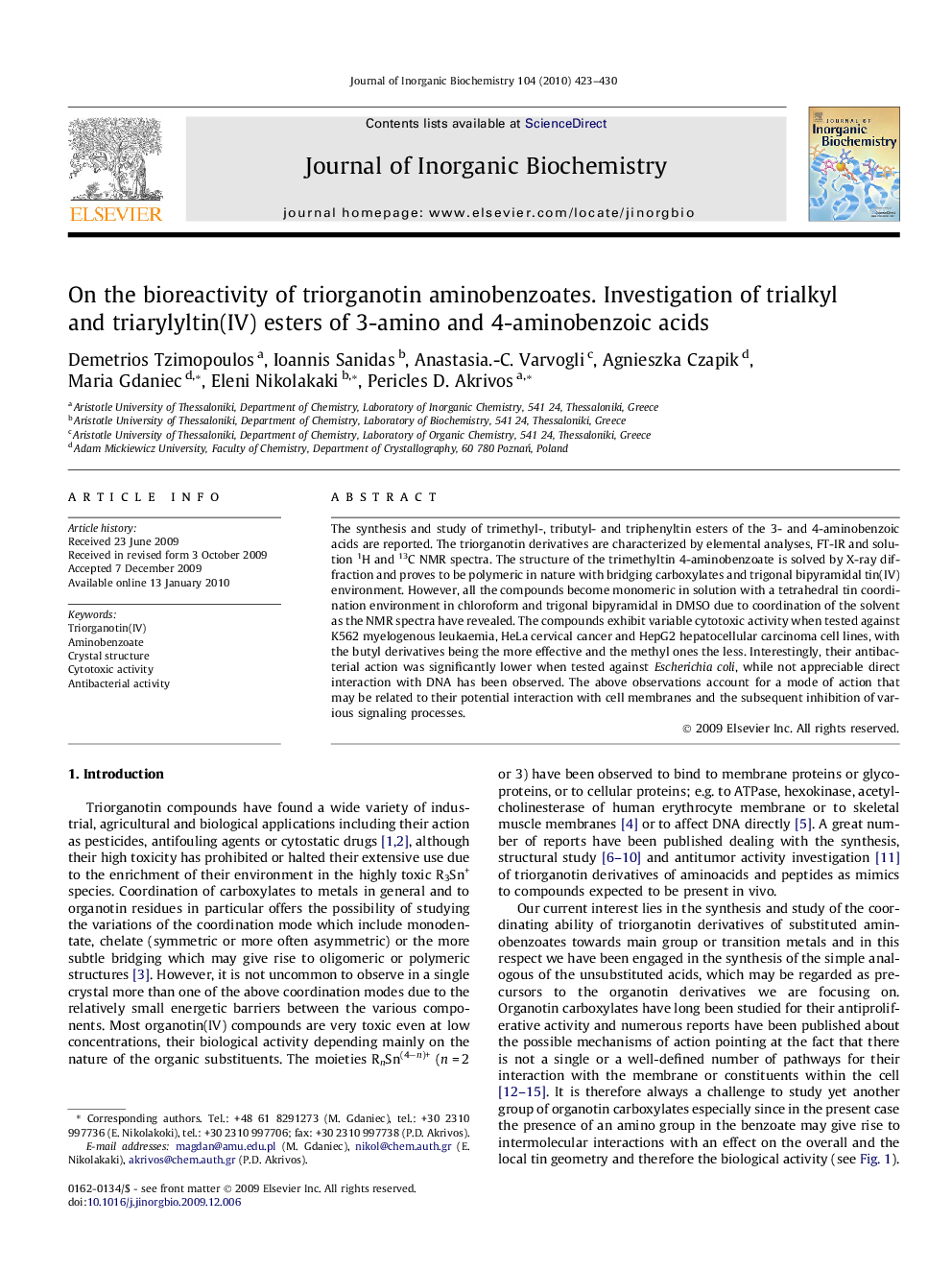| Article ID | Journal | Published Year | Pages | File Type |
|---|---|---|---|---|
| 1317987 | Journal of Inorganic Biochemistry | 2010 | 8 Pages |
The synthesis and study of trimethyl-, tributyl- and triphenyltin esters of the 3- and 4-aminobenzoic acids are reported. The triorganotin derivatives are characterized by elemental analyses, FT-IR and solution 1H and 13C NMR spectra. The structure of the trimethyltin 4-aminobenzoate is solved by X-ray diffraction and proves to be polymeric in nature with bridging carboxylates and trigonal bipyramidal tin(IV) environment. However, all the compounds become monomeric in solution with a tetrahedral tin coordination environment in chloroform and trigonal bipyramidal in DMSO due to coordination of the solvent as the NMR spectra have revealed. The compounds exhibit variable cytotoxic activity when tested against Κ562 myelogenous leukaemia, HeLa cervical cancer and HepG2 hepatocellular carcinoma cell lines, with the butyl derivatives being the more effective and the methyl ones the less. Interestingly, their antibacterial action was significantly lower when tested against Escherichia coli, while not appreciable direct interaction with DNA has been observed. The above observations account for a mode of action that may be related to their potential interaction with cell membranes and the subsequent inhibition of various signaling processes.
Graphical abstractThe synthesis of triorganotin(IV) esters of 3- and 4-aminobenzoic acids is described. The compounds are characterized spectroscopically and studied for their antibacterial action against Escherichia coli and their cytotoxic activity against Κ562, HeLa and HepG2 cell lines. The polymeric nature of one trimethyl derivative is verified by X-ray diffraction.Figure optionsDownload full-size imageDownload as PowerPoint slide
